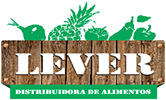TIPS
avocado
Avocado has a hight fat percentage, it's rich in calories, which make it contraindicated for weight-reducing or weight-managing diets. However, as its fat is easily assimilated by the body, it can be included in the diet of those who have digestive problems. Avocado is rich in vitamin A and some B complex, and has iron salts, calcium and phosphorus. Traditionally used in vitamins and kneaded with milk and sugar, it can also be part of salads, seasoned with parsley, chives, olive oil and vinegar, one of Mexican recipes.
ZUCCHINNI
Quite used in salads, stews, soufflés and baby food, for their consistency and digestible, zucchini contains calcium, phosphorus, iron and cellulose, as well as vitamin A and complex B. When buying give preference to products which are tight, with no cracks. In preparation, avoid peeling the zucchini, scrape gently with a knife. Also avoid cooking it for over 15 minutes as the legume consists of more than 94% water starts losing nutrients and gets the consistency of a soup. There are large zucchini, but the taste is better when the vegetable is consumed still small.
Coconut
With high levels of minerals, mainly potassium, sodium, phosphorus and chloride, coconut is suitable for preventing a number of diseases such as atherosclerosis and lung damage. The coconut has a predominance of water, considered a natural isotonic, capable of replenish the minerals needed by the body. It is indicated for cases of dehydration, helps in child growth and the fight against cholesterol. Originating in India, coconut arrived in Brazil in the sixteenth century with the Portuguese and is a product where everything is useful, pulp and water to the straw and bark.
apple
The apple, as well as tasty, has considerable nutritional value. It contains vitamin B complex and minerals of phosphorus and iron. The fruit is rich in quercetin, a substance that helps prevent the formation of blood clots in the brain. It is recommended consuming it natural, with the peel, since the vitamins and minerals are deposited in greater quantity in this part. When buying choose the peel with a sharp color (red, yellow or green) and bright, heavy, without soft tissue, holes or cracks. So it saves up to one month in the refrigerator.
PASSION FRUIT
Very well known in Brazil, passion fruit is rich in vitamins C and B complex, and minerals such as iron, calcium and phosphorus, also known for its sedative properties. With high nutritional value, it helps in the healing process and acts against infections. The seeds are used in folk medicine, as anthelmintic. When buying, choose the bright, smooth and firm shell, no cracks or stains. The fruit is ripe if by pressing the opposite side to the cable, it yields to finger pressure without rupturing the shell. Passion fruit with shell very wrinkled and dark yellow color indicates that the fruit is very ripe, with more pulp than shell.
OKRA
Extremely important for vision, skin and mucous membranes, vitamin A is found in high levels on okra, usually eaten fried, in soups, stews or salads. At the time of choosing them, give preference to the tender and firm. It also has vitamin C and some B complex. Of easy digestion, is recommended for people suffering from digestive problems, it is effective, as folk medicine, in cases of infections of the intestines, bladder and kidneys. To take the slime of okra, sprinkle drops of lemon juice or vinegar when stew it.

